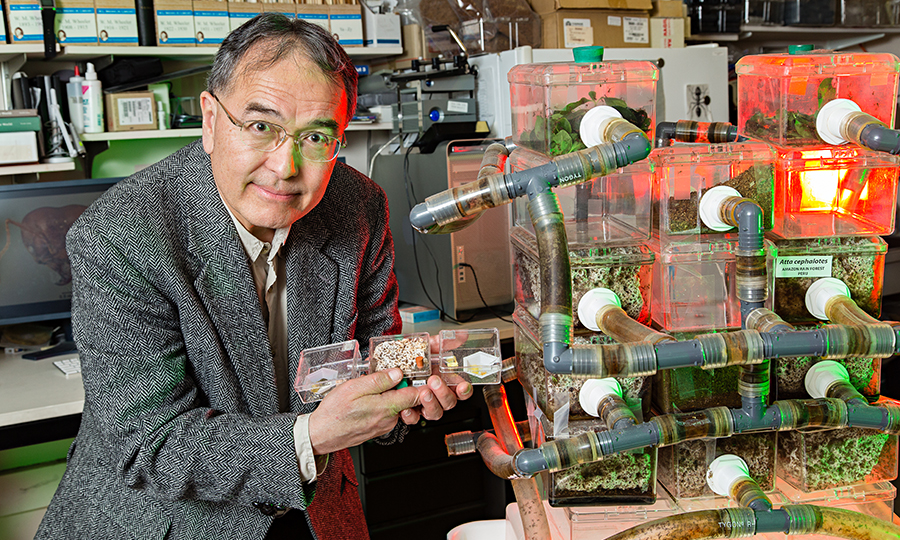BRIEF: When the Climate Dried, Ants Invented Domestication

Image Credit: James DiLoreto, Smithsonian.
(Inside Science) -- A shift from wet to dry habitats may have allowed ants to create the world's first domesticated species, according to a new study. Ants began raising fungus for food much earlier, but their original crops were the same types of fungi that lived free in the forest. Using DNA from modern ants, researchers investigated how some fungi became fully domesticated, unable to breed with wild fungi or survive outside an ant's nest. This domestication is thought to have been a key step in the rise of some of Earth's most impressive insect societies.
The researchers analyzed DNA from 119 modern ant species representing various habitats and behaviors, including both "low" and "high" farming species. "Low" farmers still practice the agriculture of their ancestors, raising wild-type fungi in relatively simple nests. "High" farmers typically use domesticated fungi, and their societies can achieve staggering complexity.
The researchers found that the first farming ants probably evolved in wet South American forests around 60 million years ago. But contrary to previous thinking, the first "high" farmers most likely lived in drier savannah habitats. High farmers branched off from other farming ants around 30 million years ago, shortly after a cooling of Earth's climate caused grasslands to replace forests in many areas.
The crops of more primitive farming ants can survive in the wild, but only in wet environments, said Ted Schultz, a research entomologist at the Smithsonian's National Museum of Natural History in Washington, D.C. and senior author of the study published today in Proceedings of the Royal Society B. This suggests that when ants' environments dried up, their fungus survived -- but only in the sanctuary of the nest. Because the fungi could no longer breed with their wild counterparts, they were able to evolve separately into the first domestic crops.

